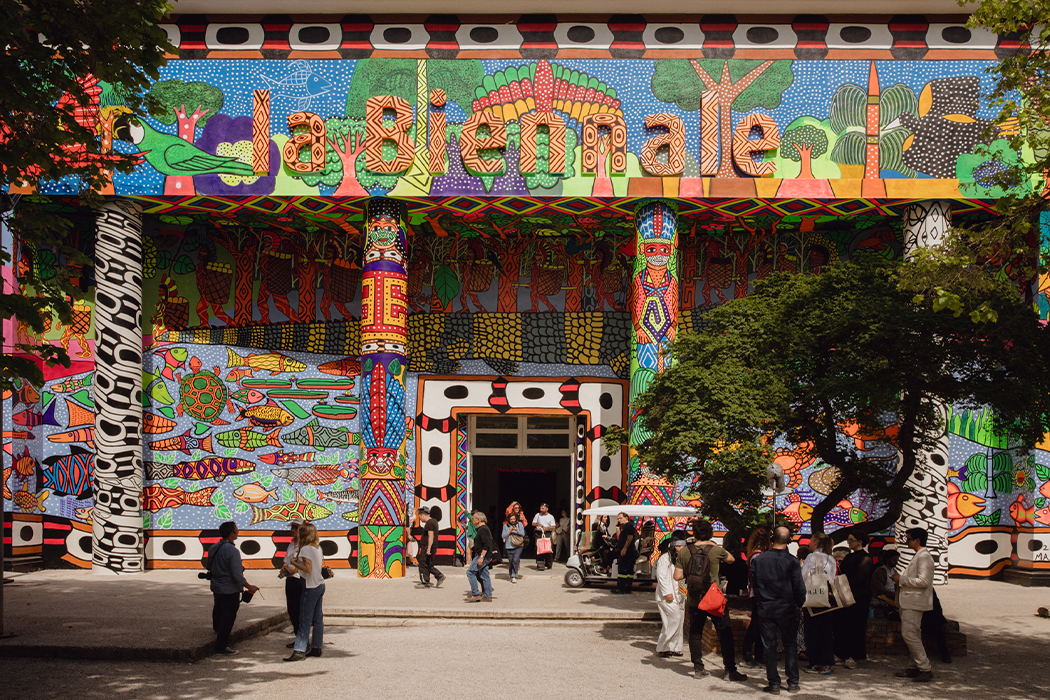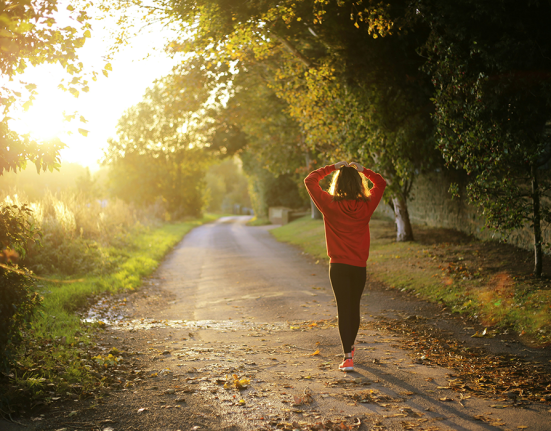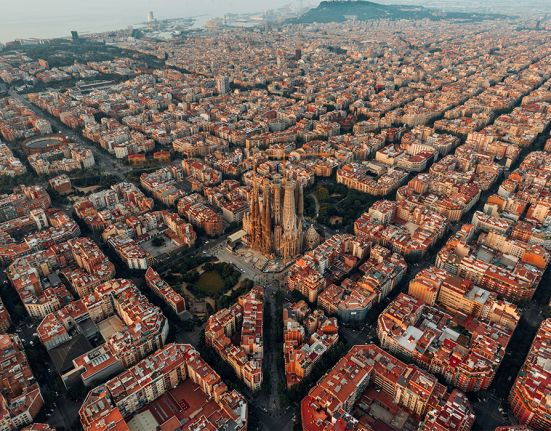It’s that time of the year! Last week the art world has flooded to the preview days of La Biennale di Venezia and thousands of art professionals and press members from all around the world has formed hour long queues in front of La Biennale’s main venues and national pavilions to catch the first glimpse of the exhibitions. Biennale had been the main attraction but the opening events, parties, delicious Venetian cuisine, and the exhibitions that are spread all over the city were at the radar of this crowd as well.
The International Art Exhibition, organized by La Biennale di Venezia is the oldest biennial in the world and could therefore be recognised as the mother of all biennials. The idea of an art exhibition in Venice was developed during impromptu meetings of a small circle of artists and art lovers at the Caffe Florian in Piazza San Marco in late 1800s. The venue of the International Art Exhibition of the City of Venice was the Giardini di Castello, partially fenced and fitted out by renovating some existing buildings to host the exhibition’s first building known over the years variously as the Palazzo Pro Arte, Palazzo Internazionale, Palazzo Centrale and Padiglione Italia. Belgium was the first country to build its own “house of art” in the Giardini. Today there are 28 countries in Giardini that have bought their space and are exhibiting in their own venue for Art and Architecture Exhibitions. The second main venue of the Biennale, which was used as the shipyard of the city for centuries is Arsenale. The Biennale has been using this venue since 1980s for main exhibition and for national pavilions that would like to rent a space for the duration of the biennial.

The 60th International Art Exhibition will take place from Saturday 20 April to Sunday 24 November 2024 in these two main venues and around the city in palazzos rented by the national pavilions and other exhibitions that are considered as the collateral events of the Biennale. The main exhibition curated by Adriano Pedrosa, who is the first Latin American curator has the theme “Stranieri Ovunque/Foreigners Everywhere”. Adriano Pedrosa is in fact no foreigner to the Istanbulite art followers; as he was the curator of the 2011 Istanbul Biennial “Untitled” which was a great success and an exhibition for the sore eyes. Quite clearly Pedrosa has continued to top himself as the Biennale Arte 2024’s main exhibition venues both in Arsenale and Giardini are a real art paradise. For the main exhibition the theme Foreigners Everywhere is a reference to the work of the French born Palermo based artist Claire Fontaine but with Pedrosa’s perspective it focuses on artists who are themselves foreigners, immigrants, expatriates, diasporic, émigrés, exiled, or refugees—particularly those who have moved between the Global South and the Global North. Artists have always travelled and moved about, under various circumstances, through cities, countries and continents, something that has only accelerated since the late 20th century—ironically a period marked by increasing restrictions regarding the dislocation or displacement of people. Therefore, migration and decolonization are key themes for the Biennale Arte 2024.
This year almost all the national pavilions have concentrated on the same theme as well. Whichever pavilion I visited, the focus was either on an artist coming from one of the colonies, by underlining that it was the first time the country was exhibiting the work of an artist from that origin, or the theme was about the indigenous people of the country. In fact, the Golden Lion for the National Pavilion went to Australia with a work based on the indigenous people of Australia by artist Archie Moore, himself an indigenous Australian.

My personal favourite was Wael Shawky in the Egyptian Pavilion. Wael Shawky likes to redefine boundaries between film, performance, sculpture, and installation through works that intervene in the gaps of the mostly widely held historical accounts of the culture and history of Arab World. His eight-part operatic film for the Egyptian Pavilion, titled Drama 1882 considers Egypt’s nationalist Urabi revolution against imperial rule. The German Pavilion, curated by the director of Staatliche Kunsthalle Baden-Baden Çağla İlk, was another corner where the queues lasted for hours. The performance for the work of Ersan Mondtag is worth the wait and you leave the pavilion with a heavy heart. I personally enjoyed the Japan Pavilion, where the artist Yuko Mohri created bizarre-shaped statues that drip water from all around, which salutes the artist’s practice: the transformative nature of ordinary objects and common situations. All the leaks in Tokyo train stations are transformed into these sculptures that Yuko Mohri created by the objects she found in the local shops and markets of Venice. Eva Kotátková’s the Heart of a Giraffe in Captivity is Twelve Kilos Lighter in Czech and Slovak Pavilion is also worth seeing, telling us the story of Lenka the giraffe. The U.S. Pavilion hosts Jeffrey Gibson and as always gets the attention, this time by the indigenous art being the highlight of the pavilion. One of my other favourites this year was Spanish Pavilion, where the Peruvian-Spanish artist Sandra Gamarra Heshiki, the first immigrant chosen to represent Spain, exposes the country’s pictorial tradition in a critical manner. Pinoteca Migrante/Migrant Art Gallery is a museum, which is revealed to be a hegemonic institution, a narrator of grand narratives whose methods of presentation and representation have been accepted as “universal” regardless of the origin of what is represented. In this very European museum, for the first time we are welcomed by art that is rather “silenced”.

If you are in town not only for the Biennale but to discover some more art, I would recommend visiting Punto della Dogana’s Pierre Huyghe exhibition, where Huyghe is questioning the relations between the human and the non-human. Another not to miss is Shahzia Sikander’s exhibition Collective Behavior, the most comprehensive presentation of the artist’s work to date, illustrating her distinctive iconography and continuous invention across media. This exhibition positions Sikander as an American artist, a Pakistani artist, a Muslim artist, a feminist artist, and most significantly, as a global citizen who mines the past to make visible new possibilities for the future. Of course, William Kentridge’s Self-Portrait as a Coffee-Pot is conveniently on the way between Arsenale and Giardini and not only for that but also for the work itself it is a must see. The exhibition of thirty-minute episodes by Kentridge, originally intended as a series for online viewing, is an experiment in embodiment and phenomenological experience in the digital age, and a reflection on what might happen in the brain and in the studio of an artist, today.
While visiting all these exhibitions and walking a minimum of 15.000 steps a day, you will obviously need to give some breaks to relax and taste the delicious Venetian cuisine. My personal favourites are La Corte Sconta, a restaurant that you need to book ahead for sure but is so much worth it; Al Covo, a very popular local family owned restaurant and a member of the “Ristoranti della Buona Accoglienza di Venezia” just like Corte Sconta; Nevodi, which is great after a long day at Giardini, as it is located at Via Garibaldi and Ristorante Carpaccio which offers you a seafood heaven. If you are planning to stay longer and make a visit to famous fisherman island Burano, than you should eat at Trattoria da Romano and try their seafood risotto, which is literally to die for! Of course, Caffe Florian is the place to stop for an early evening Aperol spritz or prosecco and while enjoying the Piazza San Marco it is the place to relive where the idea of the first Biennale came up.
So here are my highlights for this year’s Biennale Arte, I wish you all good luck with the queues and don’t forget to pack your raincoats and two pair of comfy shoes because this is Venice, and you won’t be able to get back home without having at least two blisters per foot!










